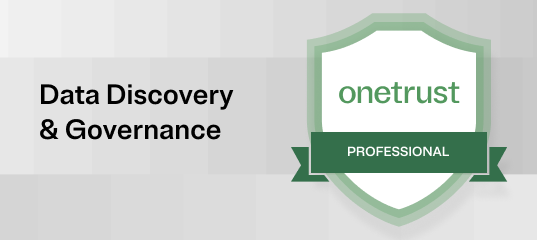Alongside the increase in security risks comes the corresponding laws and regulations necessary to keep your organization’s data safe. Two common safeguards today are ISO 27001 and NIST CSF.
ISO 27001 is an international standard to improve an organization’s information security management systems, while NIST CSF helps manage and reduce cybersecurity risks to their networks and data.
Both ISO 27001 and NIST CSF effectively contribute to a stronger security posture. However, the way they go about data protection is distinct to each framework.
Below, we compare the similarities and differences between ISO 27001 and NIST CSF, and how the two standards work together to ensure information security.
What is ISO 27001?
The ISO 27001 or ISO/IEC 27001 was created by the International Organization for Standardization (ISO) in partnership with the International Electrotechnical Commission (IEC).
The standard is internationally recognized as one of the most effective ways to maintain information security. It details requirements for establishing, implementing, maintaining, and continually improving an organization’s information security management system (ISMS).
According to ISO 27001, information security includes three key elements:
- Confidentiality: Information is made available only to authorized users
- Integrity: Information is accurate and complete
- Availability: Authorized users have access to information when needed
The two stages in ISO 27001 certification
The ISO 27001 certification process involves two main stages:
Stage 1: Documentation review or documentation audit
An external auditor will review your processes and policies to establish whether they’re in line with the requirements of ISO 27001 and an ISMS has been implemented.
Stage 2: Certification audit
An auditor will conduct a thorough on-site assessment to establish whether the organization’s ISMS complies with ISO 27001.
If organizations pass the formal compliance audit, they will receive their ISO 27001 certification. ISO 27001 certifications are valid for three years, during which annual surveillance audits are performed for the first two years and a recertification audit is required in the third year.
What is NIST CSF?
The National Institute of Standards and Technology Cybersecurity Framework (NIST CSF) is a set of guidelines for all organizations to manage and reduce cybersecurity risks.
NIST CSF is a voluntary standard that covers cybersecurity methodologies and helps foster compliance communication across internal and external stakeholders.
5 functions of NIST CSF
The NIST CSF is organized into five main functions, which serve as the backbone of the core framework:
1. Identify: Develop an understanding of how the organization will manage cybersecurity risks to systems, people, assets, data, and capabilities. Seeing the business context, resources that support critical functions, and related cybersecurity risks helps focus and prioritize efforts to be consistent with risk management strategies and business needs.
2. Protect: Establish safeguards to ensure the delivery of critical infrastructure services and limit or contain the negative impact of cybersecurity events.
3. Detect: Implement key activities that help discover and identify the occurrence of cybersecurity events in a timely manner.
4. Respond: Plan the activities that must take place when a cybersecurity incident is detected, including how to contain negative impact across the organization, notify internal and external stakeholders, and continue business operations.
5. Recover: Identify plans to recover and restore any functions impaired by a cybersecurity incident and recommended improvements to existing security management activities.
* In addition, the proposed draft of NIST CSF 2.0 adds a "Govern" function to emphasize the importance of cybersecurity governance.
NIST CSF vs. NIST 800-53
NIST CSF provides a high-level scope and flexible framework any organization can use to build an information security program. In contrast, NIST 800-53 is a special publication designed to help implement NIST CSF in private businesses that work with the US federal government.
It includes both NIST CSF and ISO 27002 requirements, as well as many others, making NIST 800-53 one of the most granular cybersecurity frameworks available.
For this reason, government agencies like the Federal Information Security Management Act (FISMA) and the Department of Defense Information Assurance Risk Management Framework (DIARMF) rely heavily on the NIST 800-53 framework.
Similarities between ISO 27001 vs. NIST CSF
ISO 27001 and NIST CSF are complementary frameworks based on similar risk management processes:
- Identify risks to the organization’s information
- Implement controls appropriate to the risk
- Monitor their performance
There are many other overlaps between the two security frameworks. In fact, an organization that holds an ISO 27001 certification has already met about 83% of its NIST CSF requirements. Conversely, an organization that’s NIST CSF compliant is already 61% of the way to the ISO 27001 finish line.
Differences between ISO 27001 vs. NIST CSF
Despite the many similarities between ISO 27001 and NIST CSF, there are some notable variations between the two standards. These include:
Covered jurisdiction: ISO 27001 is an internationally recognized approach for establishing and maintaining an ISMS, while NIST was founded to help US federal agencies and organizations better manage their risk.
Number of requirements: The ISO 27001 Annex A includes 93 controls situated in four sections, while NIST frameworks have various control catalogs and five functions to customize cybersecurity controls.
Operational stage and technical level: ISO 27001 is comparatively less technical, with more emphasis on risk-based management and organizations that have reached operational maturity. NIST CSF is more technical and best suited for the initial stages of a cybersecurity risk program or when attempting to mitigate a breach.
Expected costs: ISO 27001 involves a series of audits and certifications that involve a greater expense. NIST CSF is voluntary, which allows organizations to implement the standard using their preferred pace and resources.
NIST CSF and ISO 27001 frameworks can work together
ISO 27001 and NIST CSF each tackle information security and risk management from different angles and different scopes.
As a general recommendation, organizations just starting to build their cybersecurity program can start with NIST CSF. This helps paint a clear picture of the state of their cybersecurity program, after which they can develop a more secure process as they scale and work toward ISO 27001 certification.
Learn more about gaining compliance by downloading our eBook about the ISO 27001 journey. You can also request a demo for OneTrust’s Certification Automation tool.











